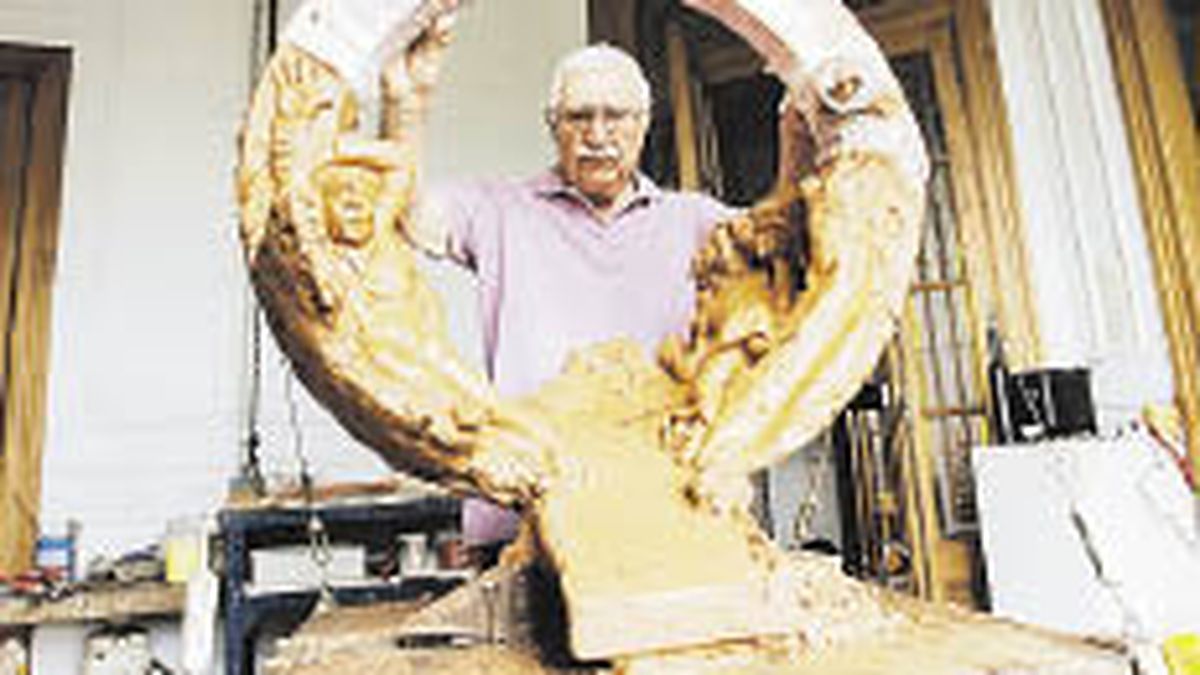In a scholarly text, José Emilio Burucúa established analogies with sculptures from the 3rd and 2nd centuries BC. C., the passions of Christ, the infinite flagellations and resurrections of German painting of the fifteenth and sixteenth centuries, representations in which the body expresses its resistance to pain, faces with the contained cry, the tension of the body or the image of the suffering.
Going through this exhibition is an adventure through the entrails of being, which is why his sculpture can be described as visceral through a transparent material-polyester resin under which various objects are discovered, including weapons, which refer to the violence exercised in our violent history. This material allows you to feel the flow of blood, see the folds and porosity of the skin, pain and laceration, and tenderness.
It is worth reading the posters corresponding to each work since the artists and the works that have inspired him are explained -a true walk through the history of art- and even though the forcefulness of his work does not need it, it is a success didactic of curatorship and montage.
At the entrance to the room we find a recent work that expresses the pleasure for color: “The need for the rainbow” based on El Bosco and “Rainbows with landscape” by Caspar Friedrich, the famous German romantic. In “Broken Vase” and “Up to a Certain Point” he pays homage to Van Gogh. There is the famous group of nine sculptures “Kinderspelen” inspired by Brueghel that was exhibited at the Venice Biennale in 2015 and that instead of happy children’s games, its stark gaze falls on Argentine children, beaten, raped, abandoned to drugs . Another work by Brueghel “The Triumph of Death”, a cart full of corpses, was transferred to the time of the dictatorship and the disappearances that he titled “Little Dock Sud Truck”.
Among other sculptures are “Procedure” (1972) “Icarus” (1979), “Floating” (1987) that refers to Saint Sebastian by El Greco, the exciting “Bearer of the word” that holds the book Summa Teológica de Santo Tomás.
In front of the painting belonging to the Museum, “La urpila” by Gómez Cornet, which in Quechua means “little dove”, is his version of the same name of that helpless girl, a cartonera that drags her car with Obelisk included.
Another Argentine artist who inspired him was Spilimbergo through his series of monocopies titled “Emma”. Distéfano presents two sculptures, one in white and the other in black, dramatic figures covered in classified advertisements for prostitution according to the theme that Spilimbergo had created.
“Cosmé Tura in the payments of Don Enrique”, a kind of contradictory game since Tura was a luxurious painter of the quattroccento and the opposite, a Policastro, a pictorial-sculptural work for connoisseurs of this Argentine artist, a painter of humility, simplicity, love of the land.
Juan Carlos Distéfano is the maker of an unconventional work that challenges current theories of the ephemeral. (National Museum of Fine Arts. Closing on July 31. Tuesday to Friday from 11 to 20, Sat. and Sun. 10 to 20. Free admission).
Source: Ambito
David William is a talented author who has made a name for himself in the world of writing. He is a professional author who writes on a wide range of topics, from general interest to opinion news. David is currently working as a writer at 24 hours worlds where he brings his unique perspective and in-depth research to his articles, making them both informative and engaging.




